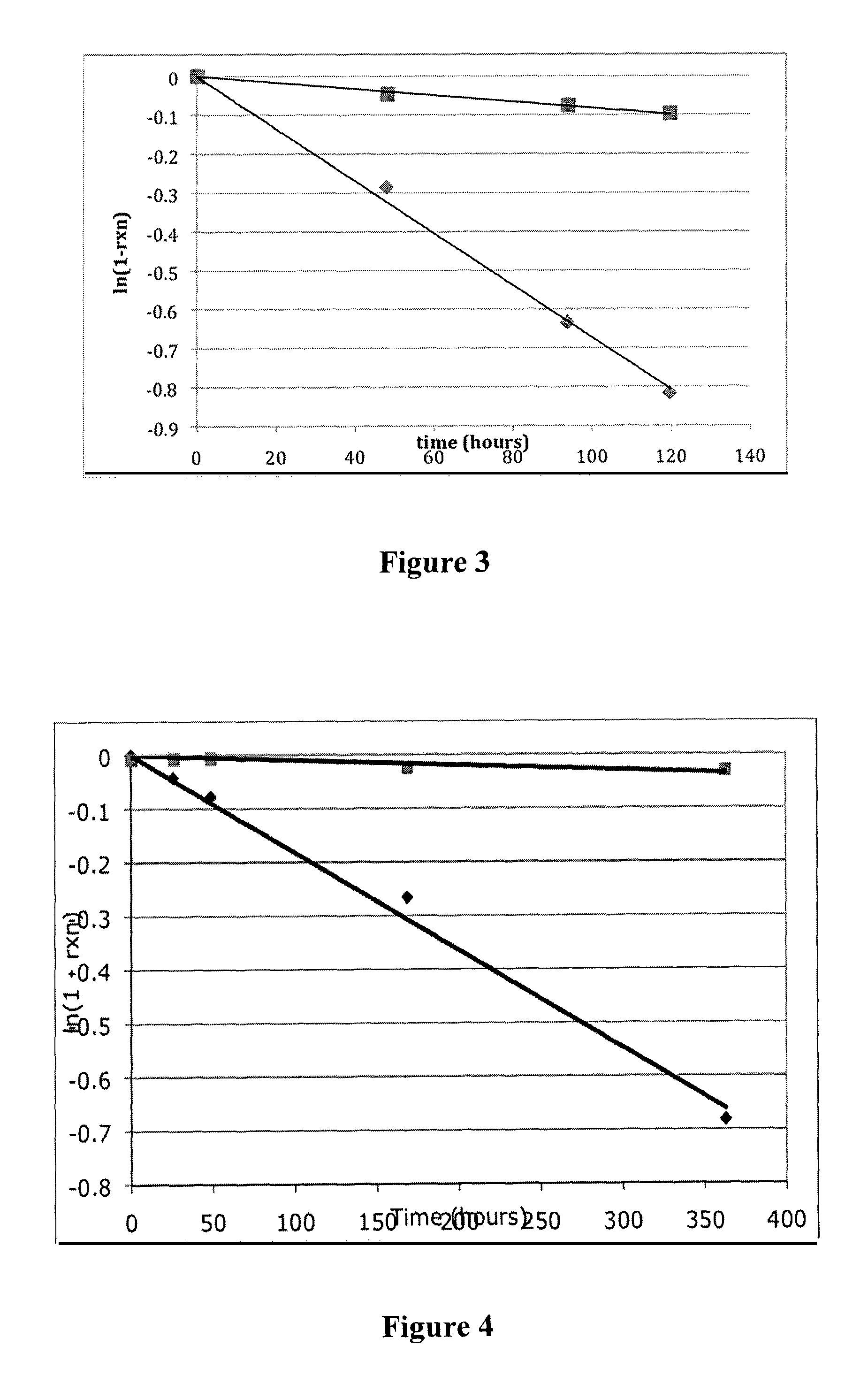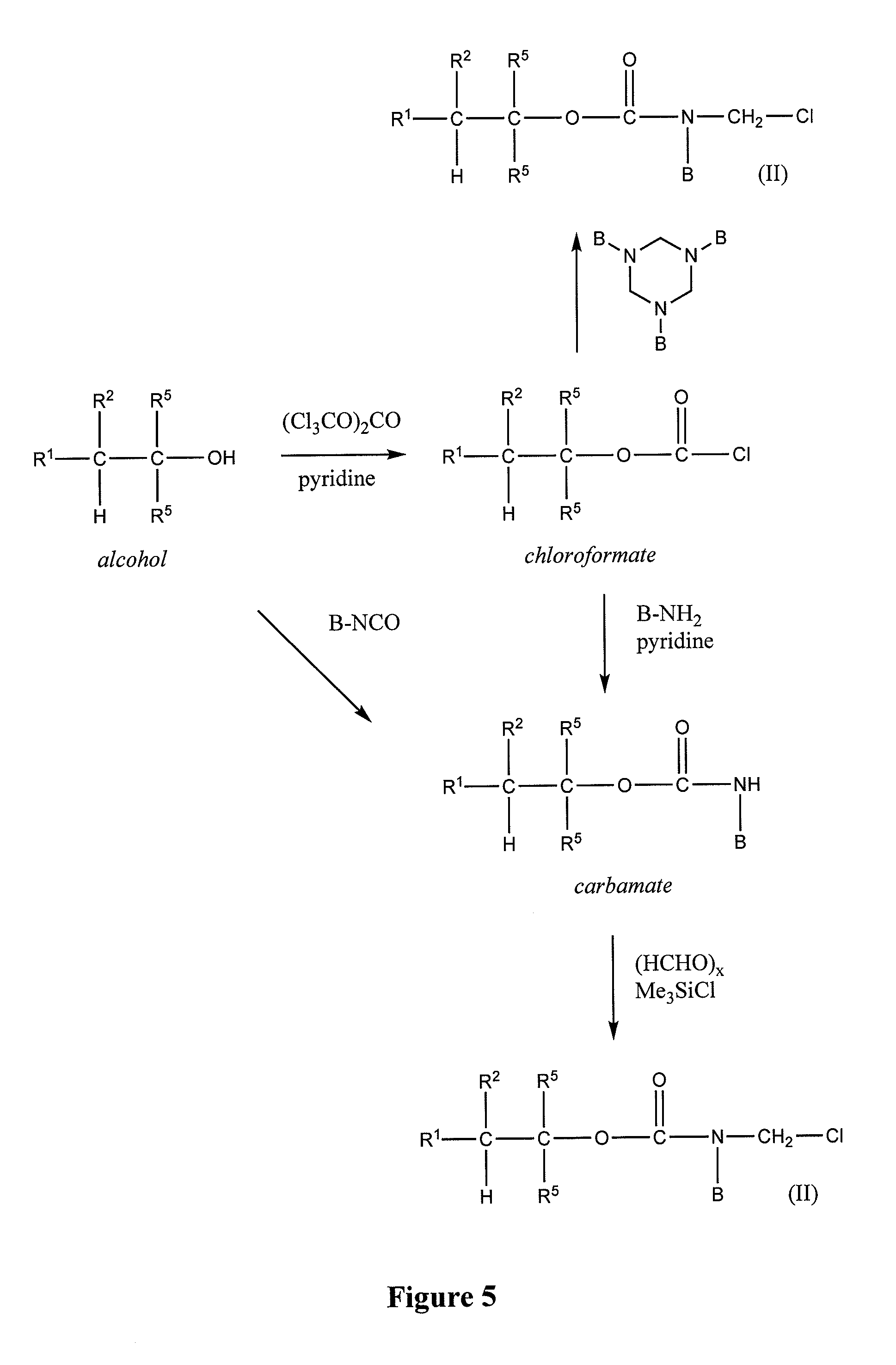Controlled release from macromolecular conjugates
a macromolecular conjugate and release rate technology, applied in the field of macromolecular conjugates, can solve the problems of unpredictable and difficult to adjust the release rate of drugs in these cases, and the release rate remains tunable, and the control of the release rate is not always stabl
- Summary
- Abstract
- Description
- Claims
- Application Information
AI Technical Summary
Benefits of technology
Problems solved by technology
Method used
Image
Examples
example 1
Groups Cleavable by β-Elimination
[0157]A series of model linker scaffolds having a range of functional groups as potential pKa modulators (substituted aromatics, ketones, nitriles, sulfones) were designed, prepared and linked via carbamate bonds to Ne-2,4-dinitrophenyl-L-lysine (Ne-DNP-Lys) for evaluation of release rates. DNP-Lys was chosen as the released moiety as it is water soluble and is a strong chromophore to permit HPLC-UV analysis. This experiment demonstrates that the rate of carbamate cleavage is controllable through the choice of particular substituents on the trigger group.
[0158]
[0159]The model DNP-lysine derivatives were prepared as described in copending application Ser. No. 13 / 696300.
[0160]The rates of release of Nε-2,4-dinitrophenyl-L-lysine from these compounds were determined at pH 7.4 or pH 8.3, 37° C., by HPLC analysis. Kinetic analyses of the release reactions were performed by HPLC (C18; linear methanol / water+0.5% HOAc gradient) using a UV / vis monitor at 350 ...
example 2
General Preparation of Chloroformates and N-Hydroxysuccinimide Carbonates
[0165]Pyridine (0.33 equivalent) is added dropwise to a vigorously stirred solution of the alcohol R1R2C—(C═C)mC(R5)2OH (1 equivalent) and triphosgene (0.33 equivalent) in anhydrous tetrahydrofuran (2 mL / mmol) cooled on ice. After 1 hr, the mixture is allowed to warm to ambient temperature and kept overnight. The mix is then filtered and concentrated under vacuum on a rotary evaporator. The resulting crude chloroformate R1R2C—(C═C)mC(R5)2OC(O)Cl is used without further purification.
[0166]To prepare N-hydroxysuccinimide carbonates, the crude chloroformate is dissolved in anhydrous tetrahydrofuran (2 mL / mmol) and treated with pyridine (2 equivalents) and N-hydroxysuccinimide (4 equivalents) at ambient temperature for 30 minutes. The mixture is diluted with ethyl acetate, washed successively with 0.1 N HCl, water, and brine, then dried over MgSO4, filtered, and evaporated. The crude carbonates R1R2C—(C═C)mC(R5)2OC...
example 3
General Preparation of Carbamates
[0167]A solution of the chloroformate of Example 2 (1 equivalent) in acetone (2 mL / mmol) is added dropwise to a vigorously stirred mixture of the amine BNH2 (1 equivalent) and NaHCO3 (2 equivalents) in water (2 mL / mmol). After 30 minutes, carbamates which precipitate as solids are collected by vacuum filtration, washed with water, and dried; carbamates which separate as oils are extracted with ethyl acetate. The extract is dried over MgSO4, filtered, and evaporated to provide the crude carbamate. In either case, the crude carbamate R1R2C—(C═C)mC(R5)2OC(O)NHB is further purified by column chromatography (SiO2) or by crystallization.
[0168]Alternatively, triethylamine (1 equivalent) is added to a mixture of the amine BNH2 (1 equivalent) and the chloroformate (1 equivalent) in an inert anhydrous solvent, for example dichloromethane, tetrahydrofuran, or ethyl acetate. After stirring for 1 h at ambient temperature, the mixture is evaporated to dryness, and...
PUM
| Property | Measurement | Unit |
|---|---|---|
| temperature | aaaaa | aaaaa |
| temperature | aaaaa | aaaaa |
| molecular weight | aaaaa | aaaaa |
Abstract
Description
Claims
Application Information
 Login to View More
Login to View More - R&D
- Intellectual Property
- Life Sciences
- Materials
- Tech Scout
- Unparalleled Data Quality
- Higher Quality Content
- 60% Fewer Hallucinations
Browse by: Latest US Patents, China's latest patents, Technical Efficacy Thesaurus, Application Domain, Technology Topic, Popular Technical Reports.
© 2025 PatSnap. All rights reserved.Legal|Privacy policy|Modern Slavery Act Transparency Statement|Sitemap|About US| Contact US: help@patsnap.com



